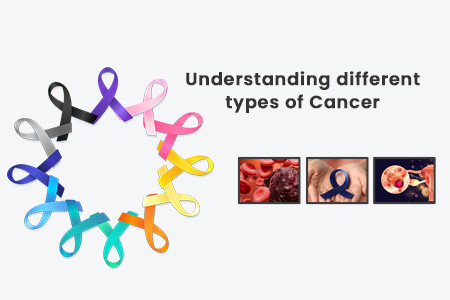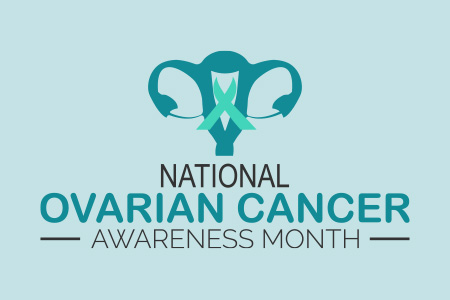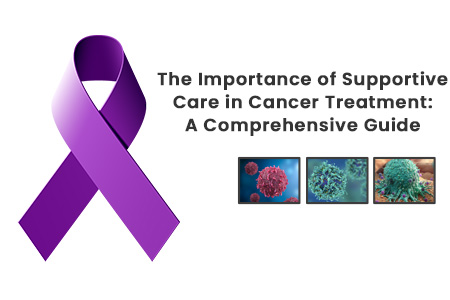
<p><span style="color: black;">Cancer is a complex and diverse group of diseases characterized by the uncontrolled growth and spread of abnormal cells in the body. Each type of cancer is unique, with distinct risk factors, symptoms, and treatment approaches. Let’s understand the various types of cancer, empowering individuals to recognize the signs, comprehend the underlying causes, and explore treatment options.</span></p><p> </p><p><strong style="color: black;">Common Types of Cancer</strong></p><p><span style="color: black;">Breast Cancer: Breast cancer is a malignant tumor that forms in the cells of the breast. It is the most prevalent cancer in women worldwide. Several risk factors contribute to its development, including age, family history, hormonal factors, and certain gene mutations like BRCA1 and BRCA2. Common signs and symptoms include the presence of a lump or thickening in the breast, changes in breast size or shape, nipple discharge, and skin changes. Diagnostic methods include mammography, ultrasound, MRI, and biopsy. </span></p><p><span style="color: black;">Lung Cancer: Lung cancer can be broadly classified into non-small cell lung cancer (NSCLC) and small cell lung cancer (SCLC). The leading cause of lung cancer is cigarette smoking, with exposure to secondhand smoke, radon gas, asbestos, and environmental pollutants also contributing to the risk. Symptoms of lung cancer often include persistent coughing, chest pain, difficulty breathing, weight loss, and recurrent respiratory infections. </span></p><p><span style="color: black;">Colorectal Cancer: Colorectal cancer refers to cancer that develops in the colon or rectum. Risk factors include increasing age, a family history of colorectal cancer or polyps, certain genetic conditions, a diet high in red or processed meat, sedentary lifestyle, smoking, and excessive alcohol consumption. Common symptoms include changes in bowel habits, blood in the stool, abdominal pain, and unexplained weight loss. </span></p><p><strong style="color: black;">Prostate Cancer:</strong></p><p><span style="color: black;"> Prostate cancer is a type of cancer that develops in the prostate gland, which is a part of the male reproductive system. Age, family history, and certain genetic factors influence the risk of developing prostate cancer. Common symptoms include urinary problems, such as frequent urination, difficulty starting or stopping urination, weak urine flow, and blood in the urine. </span></p><p><span style="color: black;">Less Common Types of Cancer</span></p><p><strong style="color: black;">Pancreatic Cancer:</strong></p><p><span style="color: black;"> Pancreatic cancer originates in the pancreas, an organ located behind the stomach that plays a crucial role in digestion and hormone regulation. Risk factors for pancreatic cancer include smoking, a family history of the disease, certain genetic syndromes, obesity, and chronic pancreatitis. Symptoms of pancreatic cancer may not appear until the disease has advanced, but early warning signs can include abdominal or back pain, weight loss, jaundice, and digestive problems. </span></p><p><strong style="color: black;">Ovarian Cancer: </strong></p><p><span style="color: black;">Ovarian cancer refers to the development of cancerous cells in the ovaries, the reproductive organs responsible for producing eggs and hormones. Ovarian cancer can be classified into different types, including epithelial, germ cell, and stromal tumors. Risk factors for ovarian cancer include a family history of the disease, certain gene mutations (such as BRCA1 and BRCA2), increasing age, obesity, and hormone replacement therapy. Protective factors include oral contraceptive use and pregnancies. Symptoms of ovarian cancer are often vague and can include bloating, pelvic or abdominal pain, changes in bowel habits, and a feeling of fullness. </span></p><p><strong style="color: black;">Leukemia:</strong></p><p><span style="color: black;"> Leukemia is a type of cancer that affects the blood and bone marrow, where blood cells are produced. It is characterized by the overproduction of abnormal white blood cells. There are different types of leukemia, including acute lymphoblastic leukemia (ALL), acute myeloid leukemia (AML), chronic lymphocytic leukemia (CLL), and chronic myeloid leukemia (CML). Risk factors for leukemia include exposure to certain chemicals (such as benzene), radiation exposure, genetic disorders (such as Down syndrome), and a family history of the disease. </span></p><p><strong style="color: black;">Skin Cancer: </strong></p><p><span style="color: black;">Skin cancer is the abnormal growth of skin cells, usually caused by exposure to ultraviolet (UV) radiation from the sun or artificial sources like tanning beds. The three main types of skin cancer are basal cell carcinoma, squamous cell carcinoma, and melanoma. Risk factors for skin cancer include excessive exposure to UV radiation, fair skin, a history of sunburns, a family history of the disease, and certain genetic factors. Signs and symptoms of skin cancer can include changes in the appearance of the skin, such as the development of new moles, changes in existing moles, or the appearance of sores that don't heal. </span></p><p><span style="color: rgb(14, 16, 26);">Title: Understanding Different Types of Cancer: A Blueprint for Knowledge</span></p><p><span style="color: rgb(14, 16, 26);">Introduction: Cancer is a complex and diverse group of diseases characterized by the uncontrolled growth and spread of abnormal cells in the body. Each type of cancer is unique, with distinct risk factors, symptoms, and treatment approaches. This blueprint aims to provide a comprehensive understanding of various types of cancer, empowering individuals to recognize the signs, comprehend the underlying causes, and explore treatment options.</span></p><p> </p><p><strong style="color: black;">Emerging and Rare Types of Cancer</strong></p><p><br></p><p><strong style="color: black;">Brain Tumors:</strong><span style="color: black;"> Brain tumors refer to the abnormal growth of cells in the brain, which can be classified as either primary (originating in the brain) or secondary (spreading from other parts of the body). Risk factors and causes of brain tumors are still not fully understood, although some factors such as exposure to ionizing radiation, certain genetic conditions, and a family history of brain tumors may increase the risk. Symptoms of brain tumors can vary depending on the location and size of the tumor, but they often include headaches, seizures, cognitive and behavioral changes, neurological deficits, and problems with balance or coordination. Diagnostic methods for brain tumors include imaging techniques such as MRI and CT scans, as well as a biopsy to analyze the tumor tissue.</span></p><p><strong style="color: black;">Sarcoma: </strong></p><p><span style="color: black;">Sarcomas are a rare type of cancer that originate in the soft tissues (such as muscles, fat, nerves, and blood vessels) or bones. Risk factors for sarcomas are not well-defined, but certain genetic conditions, exposure to radiation, and previous treatment with chemotherapy drugs called alkylating agents may increase the risk. Sarcomas can be categorized into several subtypes based on the type of tissue or cells they arise from. Symptoms of sarcomas depend on the location and size of the tumor but may include pain, swelling, a mass or lump, and limited range of motion.</span></p><p><strong style="color: black;">Thyroid Cancer:</strong></p><p><span style="color: black;"> Thyroid cancer develops in the cells of the thyroid gland, a butterfly-shaped gland located in the front of the neck that produces hormones that regulate metabolism. It is more prevalent in women than men and is usually diagnosed at a younger age. The most common types of thyroid cancer are papillary and follicular thyroid cancer. Risk factors for thyroid cancer include exposure to radiation, a family history of the disease, certain genetic conditions (such as familial medullary thyroid cancer and multiple endocrine neoplasia type 2), and a history of goiter. Symptoms of thyroid cancer can include a lump or swelling in the neck, difficulty swallowing, hoarseness, and enlarged lymph nodes.</span></p><p><span style="color: black;">The Kaizen Oncology Network is renowned as one of the </span><strong style="color: black;">Best Hospitals in Hyderabad</strong><span style="color: black;"> for providing exceptional care for cancer patients. The network takes a comprehensive and patient-centric approach to ensure the highest level of care and support throughout the cancer journey.</span></p><p><br></p><p><span style="color: black;">The Best Cancer Hospital boasts a team of highly skilled and experienced oncologists, surgeons, radiologists, and other specialists who work collaboratively to develop personalized treatment plans for each patient. They stay abreast of the latest advancements in cancer research and treatment modalities to provide the most effective and cutting-edge therapies.</span></p><p><span style="color: black;">Kaizen Oncology Network, the Best Cancer Hospital in Hyderabad places great emphasis on a multidisciplinary approach, where experts from various fields come together to discuss and decide on the best treatment options for each patient. This ensures that every aspect of the patient's condition is thoroughly evaluated and addressed.</span></p><p><br></p>
 A complete guide on Detecting Childhood Cancer
A complete guide on Detecting Childhood Cancer
 Raising National Ovarian Cancer Awareness
Raising National Ovarian Cancer Awareness
 Preventive Measures and Early Detection
Preventive Measures and Early Detection
 Understanding Different Types of Cancer
Understanding Different Types of Cancer
 The Importance of Supportive Care in Cancer Treatment: A Comprehensive Guide
The Importance of Supportive Care in Cancer Treatment: A Comprehensive Guide
.jpg) A complete Guide to Breast Cancer awareness
A complete Guide to Breast Cancer awareness
.jpg) Rising Cases of Oral Cancer and its Causes
Rising Cases of Oral Cancer and its Causes
.jpg) Tips for Breast Self-Examination
Tips for Breast Self-Examination
.jpg) The Complete Guide to Breast Cancer
The Complete Guide to Breast Cancer
Do you need emergency Medical care?
Copyright © 2022 kaizen rights reserved.